Abstract
Purpose
The purpose of this study was to evaluate the effect of surface treatment on the shear bond strength of zirconia ceramic to 3 resin cements.
Materials and methods
A total of 143 disk-shaped Zirconia blocks (HASS Co., Gangneung, Korea) were randomly divided into three treatment groups: (1) only 50 ㎛ Al2O3 sandblasting, (2) 50 ㎛ Al2O3 sandblast and zircona liner, (3) 50 ㎛ Al2O3 sandblasting and Rocatec (3M ESPE, Seefeld, Germany). Bistite II (Tokuyama Dental Co., Japan), Panavia F (Kuraray Medical, Japan), and Superbond C&B (Sun Medical, Japan) were used to cement onto the zirconia. After 24h of storage in distilled water, shear bond strength was evaluated. High value group was re-tested after thermocycling at 5,000 cycles(5-55℃). Shear bond strength data were analyzed with one-way ANOVA, two-way ANOVA test and Post Hoc Test (α =.05). Shear bond strength data before and after thermocycling were analyzed with Independent sample T test (α =.05).
Results
Super-bond C&B treated with Rocatec showed the most high shear bond strength. Super-bond C&B groups resulted in significantly higher than other cement groups (P<.05). Rocatec groups resulted in significantly higher than other surface treatment groups (P<.05). Shear bond strength has increased in Panavia F treated with Zirconia liner (P<.05). After thermocycling, shear bond strength was increased in Super-bond C&B treated with Rocatec but decreased in other groups (P<.05).
Go to : 
REFERENCES
1.Anusavice KJ. Recent developments in restorative dental ceramics. J Am Dent Assoc. 1993. 124:72–4. 76-8, 80-4.

2.Kelly JR., Nishimura I., Campbell SD. Ceramics in dentistry: historical roots and current perspectives. J Prosthet Dent. 1996. 75:18–32.

3.Brentel AS., Ozcan M., Valandro LF., Alarça LG., Amaral R., Bottino MA. Microtensile bond strength of a resin cement to feld-pathic ceramic after different etching and silanization regimens in dry and aged conditions. Dent Mater. 2007. 23:1323–31.

4.Kra¨mer N., Frankenberger R. Clinical performance of bonded leucite-reinforced glass ceramic inlays and onlays after eight years. Dent Mater. 2005. 21:262–71.
6.Ozcan M., Vallittu PK. Effect of surface conditioning methods on the bond strength of luting cement to ceramics. Dent Mater. 2003. 19:725–31.
7.Blatz MB., Sadan A., Kern M. Resin-ceramic bonding: a review of the literature. J Prosthet Dent. 2003. 89:268–74.

8.De′rand P., De′rand T. Bond strength of luting cements to zirconium oxide ceramics. Int J Prosthodont. 2000. 13:131–5.
9.Tsuo Y., Yoshida K., Atsuta M. Effects of alumina-blasting and adhesive primers on bonding between resin luting agent and zirconia ceramics. Dent Mater J. 2006. 25:669–74.

10.Derand T., Molin M., Kleven E., Haag P., Karlsson S. Bond strength of luting materials to ceramic crowns after different surface treatments. Eur J Prosthodont Restor Dent. 2008. 16:35–8.
11.Blatz MB., Sadan A., Martin J., Lang B. In vitro evaluation of shear bond strengths of resin to densely-sintered high-purity zirconium-oxide ceramic after long-term storage and thermal cycling. J Prosthet Dent. 2004. 91:356–62.

12.Kern M., Wegner SM. Bonding to zirconia ceramic: adhesion methods and their durability. Dent Mater. 1998. 14:64–71.

13.Wegner SM., Kern M. Long-term resin bond strength to zirconia ceramic. J Adhes Dent. 2000. 2:139–47.
14.Kitayama S., Nikaido T., Maruoka R., Zhu L., Ikeda M., Watanabe A., Foxton RM., Miura H., Tagami J. Effect of an internal coating technique on tensile bond strengths of resin cements to zirconia ceramics. Dent Mater J. 2009. 28:446–53.

15.Valandro LF., Ozcan M., Amaral R., Vanderlei A., Bottino MA. Effect of testing methods on the bond strength of resin to zirconia-alumina ceramic: microtensile versus shear test. Dent Mater J. 2008. 27:849–55.
16.Valandro LF., Ozcan M., Bottino MC., Bottino MA., Scotti R., Bona AD. Bond strength of a resin cement to high-alumina and zirconia-reinforced ceramics: the effect of surface conditioning. J Adhes Dent. 2006. 8:175–81.
17.Chai J., Chu FC., Chow TW. Effect of surface treatment on shear bond strength of zirconia to human dentin. J Prosthodont. 2011. 20:173–9.

18.Akyil MS., Uzun IH., Bayindir F. Bond strength of resin cement to yttrium-stabilized tetragonal zirconia ceramic treated with air abrasion, silica coating, and laser irradiation. Photomed Laser Surg. 2010. 28:801–8.
19.Blatz MB., Chiche G., Holst S., Sadan A. Influence of surface treatment and simulated aging on bond strengths of luting agents to zirconia. Quintessence Int. 2007. 38:745–53.
20.Amaral R., Ozcan M., Valandro LF., Balducci I., Bottino MA. Effect of conditioning methods on the microtensile bond strength of phosphate monomer-based cement on zirconia ceramic in dry and aged conditions. J Biomed Mater Res B Appl Biomater. 2008. 85:1–9.

21.Smith RL., Villanueva C., Rothrock JK., Garcia-Godoy CE., Stoner BR., Piascik JR., Thompson JY. Long-term microten-sile bond strength of surface modified zirconia. Dent Mater. 2011. 27:779–85.

22.Ural C., Ku¨lu¨nk T., Ku¨lu¨nk S., Kurt M., Baba S. Determination of resin bond strength to zirconia ceramic surface using different primers. Acta Odontol Scand. 2011. 69:48–53.

23.Kern M., Barloi A., Yang B. Surface conditioning influences zirconia ceramic bonding. J Dent Res. 2009. 88:817–22.

24.Aboushelib MN., Matinlinna JP., Salameh Z., Ounsi H. Innovations in bonding to zirconia-based materials: Part I. Dent Mater. 2008. 24:1268–72.

25.Aboushelib MN., Mirmohamadi H., Matinlinna JP., Kukk E., Ounsi HF., Salameh Z. Innovations in bonding to zirconia-based materials. Part II: Focusing on chemical interactions. Dent Mater. 2009. 25:989–93.

26.Mirmohammadi H., Aboushelib MN., Salameh Z., Feilzer AJ., Kleverlaan CJ. Innovations in bonding to zirconia based ceramics: Part III. Phosphate monomer resin cements. Dent Mater. 2010. 26:786–92.

27.Kulunk S., Kulunk T., Ural C., Kurt M., Baba S. Effect of air abrasion particles on the bond strength of adhesive resin cement to zirconia core. Acta Odontol Scand. 2011. 69:88–94.

28.Phark JH., Duarte S Jr., Blatz M., Sadan A. An in vitro evaluation of the long-term resin bond to a new densely sintered high-purity zirconium-oxide ceramic surface. J Prosthet Dent. 2009. 101:29–38.

29.Karakoca S., Yilmaz H. Influence of surface treatments on surface roughness, phase transformation, and biaxial flexural strength of Y-TZP ceramics. J Biomed Mater Res B Appl Biomater. 2009. 91:930–7.

30.Parsa RZ., Goldstein GR., Barrack GM., LeGeros RZ. An in vitro comparison of tensile bond strengths of noble and base metal alloys to enamel. J Prosthet Dent. 2003. 90:175–83.

31.Ozcan M., Nijhuis H., Valandro LF. Effect of various surface conditioning methods on the adhesion of dual-cure resin cement with MDP functional monomer to zirconia after thermal aging. Dent Mater J. 2008. 27:99–104.
32.Yoshida K., Taira Y., Matsumura H., Atsuta M. Effect of adhesive metal primers on bonding a prosthetic composite resin to metals. J Prosthet Dent. 1993. 69:357–62.
Go to : 
Table 1.
Resin cements used in this study
∗NPGDMA: Neopentylglycol dimethacrylate; Bis-MPEPP: 2,2-Bis-(4-methacryloxypolyethoxy phenyl) propane; MAC-10: 11-Methacryloxyundecane-1,1-dicarboxylic acid; BPO: Benzoyl peroxide; CQ: d,l-Camphorquinone; MDP: 10-Methacryloyloxydecyl dihydrogen phosphate; MMA: methyl methacrylate; 4-META: 4-methacryloy-loxyethyltrimellitate anhydride; PMMA: polymethyl methacrylate.
Table 2.
Primers & zirconia liner used in this study
Table 3.
Experimental groups used in this study
Table 4.
The mean ± SD of shear bond strength in each group (MPa)
Table 5.
Tukey HSD test for shear bond strength according to resin cements of each surface treatment group
Table 6.
Tukey HSD test for shear bond strength according to surface treatments of each resin cement group
Table 7.
Two-way ANOVA with resin cement and surface treatment




 PDF
PDF ePub
ePub Citation
Citation Print
Print


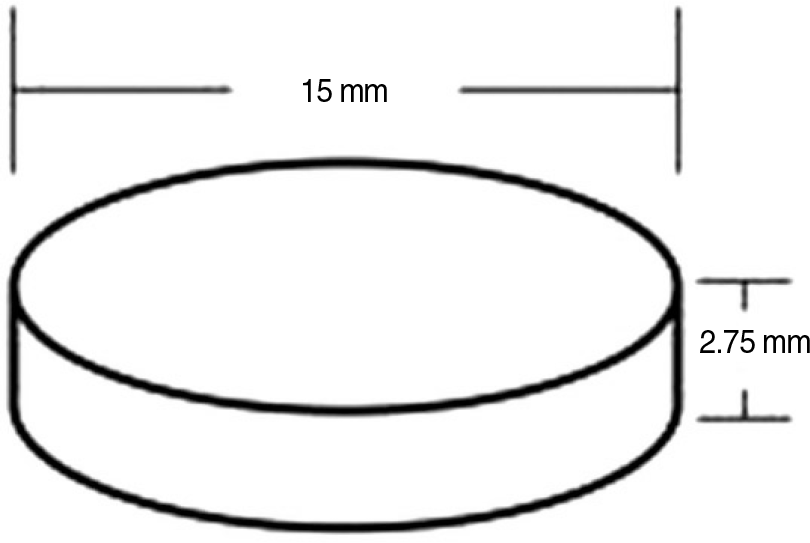
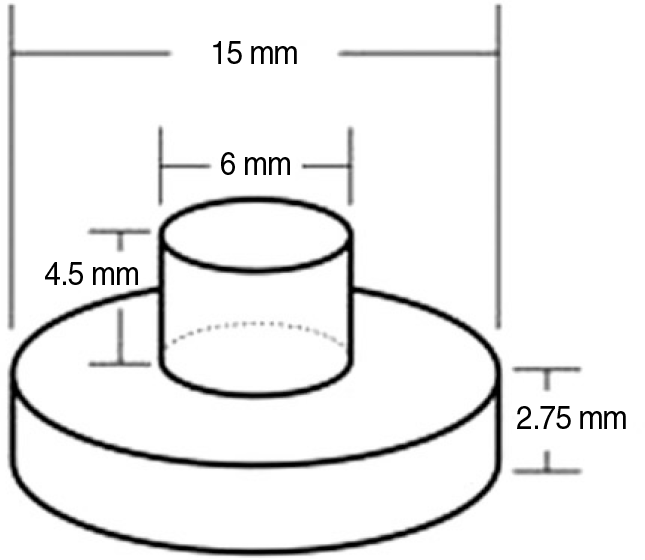
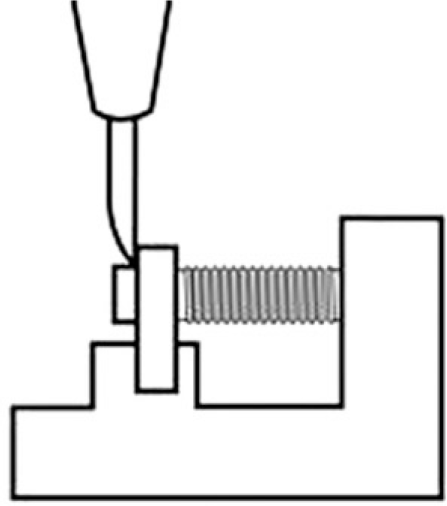
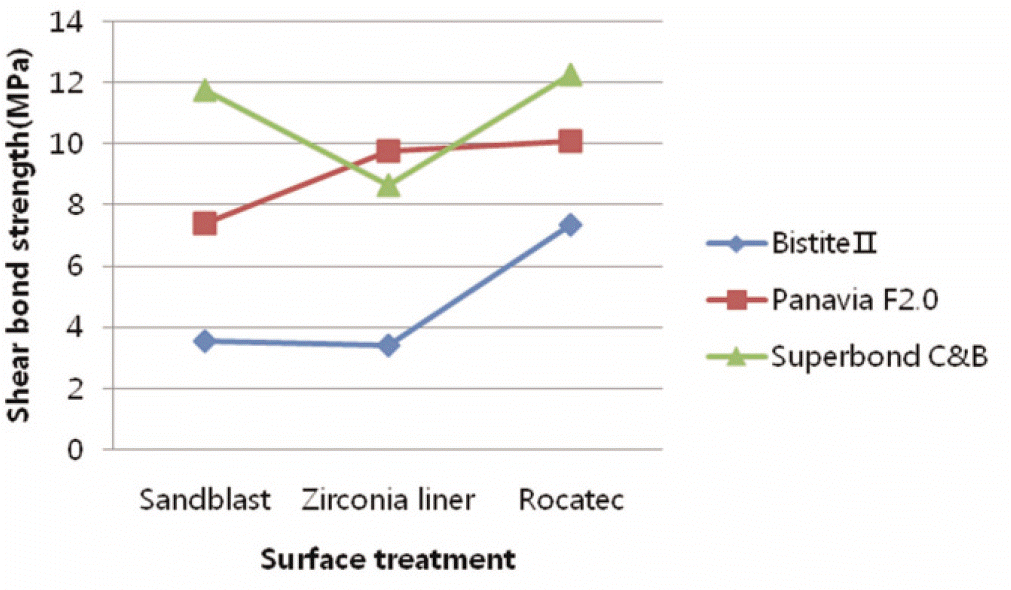
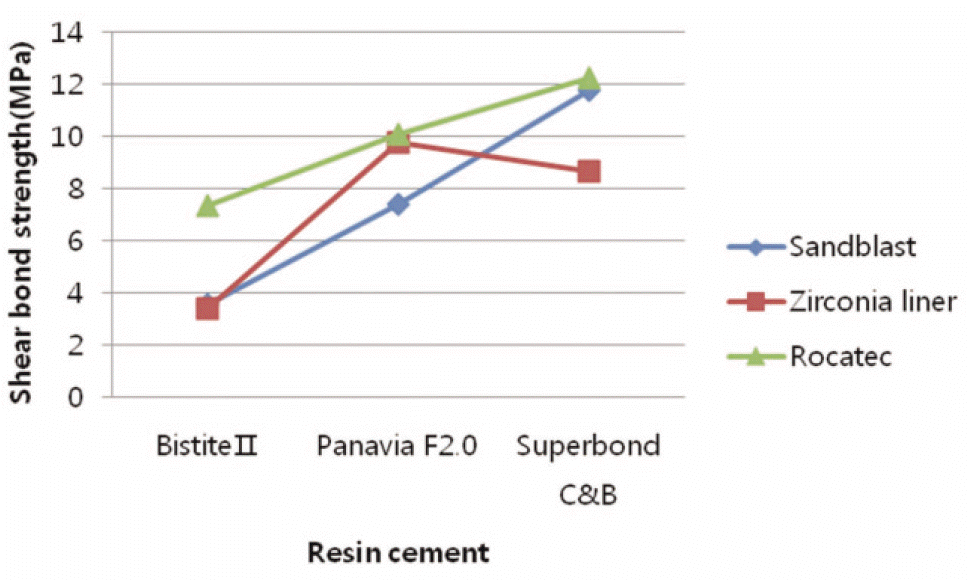
 XML Download
XML Download